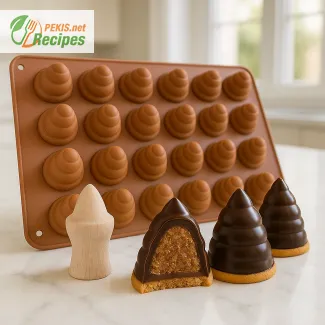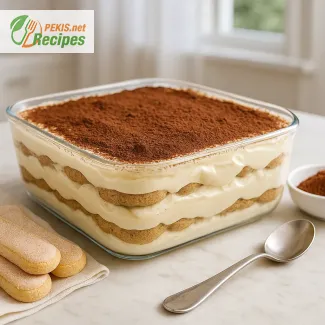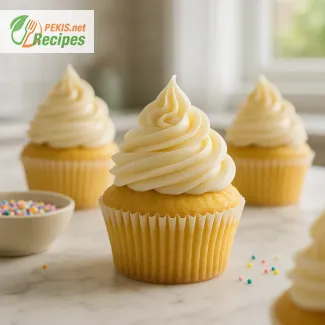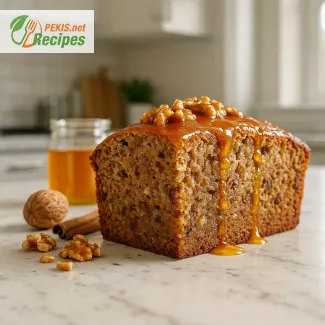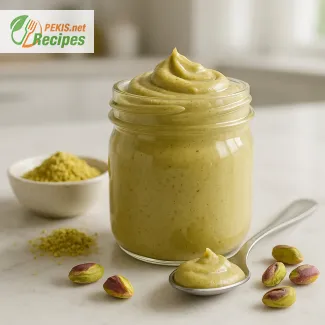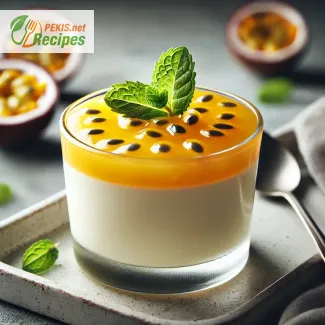
Indulge in the delicate, creamy allure of panna cotta, a celebrated Italian dessert, elevated here by the vibrant, exotic essence of passion fruit. This dish masterfully combines the silky, melt-in-your-mouth texture of panna cotta with the sharp, tropical tartness of passion fruit, creating a harmonious balance of flavors that captivates the senses and transports you to a paradise of gastronomic bliss. Perfect for any occasion, panna cotta with passion fruit brings elegance, sophistication, and a hint of the tropics to your dessert table, ensuring a memorable dining experience.
The Richness of Panna Cotta: A Silky, Creamy Italian Delight
The heart of this dessert is the panna cotta itself. Translated from Italian, "panna cotta" means "cooked cream," a simple yet luxurious mixture of heavy cream, sugar, and gelatin that sets to a perfectly smooth consistency. Panna cotta should never be too firm or overly sweet; rather, it achieves a delicate creaminess that lightly coats the palate, allowing for a rich, indulgent taste without being heavy. High-quality vanilla beans or extract typically infuse the cream, adding an aromatic depth and subtle floral notes that make every bite truly unforgettable.
This particular version incorporates a topping of passion fruit, which provides an exotic counterpoint to panna cotta’s inherent richness. Passion fruit, with its bright acidity and floral, slightly tangy flavor, enhances the cream’s sweetness and adds a tropical zest that contrasts beautifully with the dessert's soft texture. Each spoonful delivers a burst of vibrant flavor, transforming panna cotta into an experience that is at once classic and refreshingly novel.
The Allure of Passion Fruit: A Taste of the Tropics
The passion fruit, originating from South America, has gained worldwide admiration for its intense, aromatic flavor and visually stunning, golden pulp dotted with black seeds. Its flavor is often described as a combination of citrus, mango, and pineapple, with a subtle floral finish. This unique taste profile introduces a bright, exotic contrast to panna cotta, lending it a lively, refreshing twist that feels like a burst of sunshine in every bite.
For this dessert, the passion fruit pulp is spooned over the panna cotta, adding a vivid splash of color and texture. The seeds provide a slight crunch, while the tangy pulp balances the panna cotta’s creaminess. Together, they form an elegant, multi-dimensional dessert that feels both rich and refreshing, making it ideal for ending any meal on a high note.
Preparing in Advance: Convenience Without Compromise
Panna cotta with passion fruit is a fantastic make-ahead dessert that simplifies your meal preparations. Since it requires time to set, panna cotta can be made up to two days in advance. This advance preparation not only frees up your time but also enhances the flavor and texture as the panna cotta chills and firms up to the ideal consistency. Simply cover the panna cotta with plastic wrap or a lid to prevent any unwanted flavors from seeping in while it’s in the refrigerator.
The passion fruit topping, however, is best added shortly before serving to maintain its freshness and bright flavor. Preparing the topping separately ensures that the fruit remains vibrant and retains its tropical notes, giving the panna cotta the perfect fresh, exotic finish it deserves. For added convenience, you can prepare the passion fruit pulp up to 24 hours ahead, storing it in an airtight container in the refrigerator. When you’re ready to serve, simply spoon the pulp over the panna cotta and enjoy the final presentation.
Serving Recommendations: Elegant Simplicity
When it’s time to serve, panna cotta with passion fruit doesn’t need much embellishment. Its beautiful, layered appearance – the smooth, white panna cotta topped with golden passion fruit pulp – is naturally striking and sophisticated. Serve it directly in individual glass cups or ramekins for an elegant, no-fuss presentation, or unmold the panna cotta onto plates for a more formal touch, allowing the passion fruit topping to cascade over the sides for a dramatic effect.
For an added touch of refinement, consider garnishing with fresh mint leaves or a few edible flowers, which lend a splash of color and enhance the dessert’s tropical appeal. Alternatively, a light dusting of finely grated lime zest can add a subtle citrus aroma that complements the passion fruit beautifully.
Storing Panna Cotta with Passion Fruit: Maintain the Freshness
If you have any leftovers, panna cotta with passion fruit can be stored in the refrigerator for up to three days. Ensure it is covered with plastic wrap or stored in an airtight container to maintain its flavor and texture. However, due to the fresh nature of the passion fruit topping, it’s recommended to add this component shortly before serving or consuming any leftovers to ensure the most vibrant taste and texture.
Freezing panna cotta is not recommended, as it may alter the dessert's silky texture. For best results, enjoy within a few days of preparation, savoring the fresh and fragrant notes of this exotic Italian classic.
A Versatile Delight: Perfect for Any Occasion
Whether you’re hosting a dinner party or looking for a special dessert for a romantic dinner, panna cotta with passion fruit is a versatile choice that never fails to impress. Its balance of rich creaminess and lively fruitiness makes it suitable for a wide range of occasions. Additionally, it can be paired with a light dessert wine or a sparkling beverage, like Prosecco, to enhance the flavors and provide a complete sensory experience.
In every spoonful, panna cotta with passion fruit brings together the best of Italian elegance and tropical zest, offering a dessert that feels at once indulgent and refreshing. Embrace the exquisite simplicity and exotic charm of this panna cotta, and let it transform any gathering into an occasion to remember.
Step 1: Prepare the Gelatin
- In a small bowl, sprinkle the gelatin powder over the milk and let it sit for 5-10 minutes to bloom. This step ensures the gelatin dissolves fully without clumping when added to the cream mixture.
Step 2: Heat the Cream and Vanilla
- n a saucepan over medium heat, combine the heavy cream, granulated sugar, and vanilla bean (both pod and seeds, or add vanilla extract later).
- Heat until the sugar dissolves completely, stirring occasionally. Do not let the mixture come to a boil, as this can alter the panna cotta's texture.
Step 3: Combine Gelatin and Cream Mixtures
- Once the sugar has dissolved, remove the saucepan from the heat and discard the vanilla bean pod (if using).
- Add the bloomed gelatin to the warm cream mixture, stirring until the gelatin has fully dissolved. If using vanilla extract instead of a vanilla bean, add it now.
- Allow the mixture to cool slightly for 5-10 minutes to avoid excessive skin formation on top.
Step 4: Pour and Chill the Panna Cotta
- Divide the panna cotta mixture evenly among 4 small serving glasses or ramekins.
- Cover each serving with plastic wrap to prevent skin formation, and refrigerate for at least 4 hours or until set. Ideally, refrigerate overnight for the best consistency.
Step 5: Prepare the Passion Fruit Topping
- Shortly before serving, cut the passion fruits in half and scoop out the pulp into a bowl. Optionally, add 1 tablespoon of honey or sugar to balance the tartness.
- Stir well to combine, then let the mixture sit for a few minutes to allow the sweetener to dissolve.
Step 6: Serve the Panna Cotta with Passion Fruit Topping
- Spoon the passion fruit pulp over each panna cotta just before serving, allowing the seeds and juice to cascade over the creamy base.
- Serve chilled, garnished with a sprig of fresh mint or a few edible flowers for added elegance.
Storage Tips
- Refrigerate panna cotta (without the passion fruit topping) for up to 3 days. Cover with plastic wrap or a lid to maintain freshness and prevent other refrigerator odors from affecting the taste.
- Passion Fruit Topping: Prepare separately and store in an airtight container in the refrigerator for up to 24 hours. Add the topping right before serving to ensure the freshest flavor and presentation.
Freezing is not recommended, as it can compromise the dessert’s creamy texture.
Nutritional Impact of Panna Cotta with Passion Fruit on the Body and Health
Panna cotta with passion fruit is a dessert that combines indulgent creaminess with an exotic twist, making it an enjoyable treat. However, as with many desserts, understanding the nutritional breakdown and the impact of its ingredients on our bodies is crucial for mindful consumption. This panna cotta includes a blend of heavy cream, milk, sugar, gelatin, and passion fruit. Each ingredient contributes unique nutrients and health effects, both positive and potentially less beneficial, depending on the frequency and portion size.
1. Nutritional Benefits and Impacts of the Main Ingredients
Heavy Cream and Milk – Rich Sources of Fats and Calcium
Heavy cream and milk are the primary ingredients in panna cotta, providing the dessert with its creamy, luxurious texture. These dairy products are rich in fats, especially saturated fats, which are necessary for several bodily functions, such as cell structure, hormone synthesis, and the absorption of fat-soluble vitamins (A, D, E, and K). However, saturated fats should be consumed in moderation, as excessive intake can contribute to elevated cholesterol levels, potentially affecting cardiovascular health.
- Calcium is a major mineral found in both heavy cream and milk, essential for bone health, muscle function, and nerve transmission. Regular calcium intake supports bone density, which is crucial for preventing conditions like osteoporosis, particularly as we age.
- Vitamin A is also present in cream and milk, offering benefits for eye health, immune function, and skin health. As a fat-soluble vitamin, vitamin A from dairy sources is easily absorbed when combined with other fats, enhancing its bioavailability.
Gelatin – Supporting Skin, Hair, and Joint Health
Gelatin, a key setting agent in panna cotta, is derived from collagen, a protein that offers notable benefits for joint health, skin elasticity, and hair strength. Gelatin contains amino acids like glycine and proline, which are essential for collagen synthesis within the body. Collagen is a structural protein that supports skin firmness, reducing signs of aging and promoting a youthful appearance. Additionally, glycine has anti-inflammatory properties that may benefit gut health and reduce inflammation in joints, especially beneficial for those with active lifestyles or age-related joint concerns.
Passion Fruit – A Vitamin-Rich, Antioxidant Boost
Passion fruit provides a refreshing contrast to panna cotta’s creamy richness and is packed with nutrients that add health value. This tropical fruit is a rich source of vitamin C, vitamin A, and fiber, each offering specific health benefits:
- Vitamin C in passion fruit is an essential antioxidant that protects cells from oxidative damage caused by free radicals. This vitamin is crucial for immune health, skin repair, and collagen formation. Regular intake of vitamin C supports wound healing and helps maintain the integrity of skin and blood vessels.
- Vitamin A plays a role in vision health, especially in low light, and supports immune function by maintaining mucous barriers in the body. Combined with its fat-soluble nature, vitamin A’s bioavailability is enhanced when consumed with panna cotta’s creamy fats.
- Dietary Fiber is found in the seeds and pulp of passion fruit, promoting digestive health by encouraging healthy bowel movements. Fiber also helps regulate blood sugar levels and may reduce cholesterol, thus supporting heart health. Passion fruit’s fiber content, though moderate, contributes to fullness, which can help manage portion control.
Passion fruit also contains potassium, which is vital for heart health, aiding in the regulation of blood pressure and maintaining electrolyte balance. Additionally, magnesium in passion fruit supports muscle function and nerve health, making it an ideal pairing with panna cotta to create a balanced dessert with both flavor and nutritional value.
Sugar – Immediate Energy Source, Yet Best in Moderation
Sugar is used in panna cotta to add sweetness and enhance the flavors of the other ingredients. While sugar provides a quick source of energy due to its high glycemic index, which raises blood glucose levels rapidly, it’s essential to consume it in moderation. High sugar intake can lead to spikes in blood sugar, which, over time, may contribute to insulin resistance and impact metabolic health. Enjoying desserts like panna cotta occasionally and balancing them with a diet rich in whole foods helps mitigate any adverse effects.
Nutritional Summary and Health Impact per Serving
Each serving of panna cotta with passion fruit offers approximately:
- Calories: 280 kcal
- Fat: 22 g (with 14 g as saturated fat)
- Carbohydrate: 22 g
- Protein: 3 g
- Cholesterol: 85 mg
- Sodium: 30 mg
- Vitamin C: 5-10% of the daily recommended intake (from passion fruit)
- Vitamin A: Contributes to daily intake (from both dairy and passion fruit)
This dessert provides energy-dense nutrients that should be consumed as part of a balanced diet, offering an enjoyable treat that also contains essential vitamins and minerals.
How Often Should This Dessert Be Included in the Diet?
Panna cotta with passion fruit is best enjoyed occasionally rather than as a daily treat. Due to its high-fat content, especially saturated fat, and sugar levels, it is wise to view this dessert as an indulgence rather than a regular part of the diet. Once a week or for special occasions is a suitable frequency for most people, balancing enjoyment with mindful consumption.
For those managing cholesterol levels, blood sugar, or weight, reducing the portion size or saving it for special occasions is recommended. Pairing this dessert with meals that are high in fiber, protein, and unsaturated fats can help mitigate any temporary blood sugar spikes and create a balanced meal structure.
General Advice and Tips for this Recipe
- Portion Control: While panna cotta is deliciously creamy, serving it in small ramekins or cups helps manage portion sizes and reduces caloric intake per serving. Smaller servings also allow you to enjoy the dessert’s indulgence without overconsumption.
- Ingredient Substitutions for Dietary Preferences:
- Dairy-Free Alternatives: Substitute heavy cream and milk with full-fat coconut milk or almond milk to make the dessert dairy-free. While this will alter the flavor profile slightly, it’s a good option for those with lactose intolerance or dairy allergies.
- Vegan Gelatin Replacement: Replace gelatin with agar-agar to make the dessert suitable for vegetarians or vegans. Agar-agar has a stronger setting quality, so use a smaller amount and add it to the cream mixture while it’s warm to avoid clumping.
- Balanced Pairings: Consider serving panna cotta after a light meal rich in vegetables and lean proteins to balance its richness. Adding fresh fruit alongside the passion fruit topping, such as berries, adds extra fiber, antioxidants, and vitamin C, which can enhance the meal’s nutritional profile.
Panna cotta with passion fruit is a delightful combination of creamy texture and tropical tang that provides essential nutrients like calcium, vitamin A, and vitamin C. While rich in calories and saturated fats, enjoying this dessert in moderation as part of a balanced diet allows you to savor its luxurious flavors without compromising health. Careful portioning, occasional indulgence, and potential dairy-free adjustments make panna cotta with passion fruit a versatile and enjoyable addition to a well-rounded lifestyle.
This recipe contains:
- Dairy (cream and milk)
- Gelatin (for texture stabilization)
Allergen Substitution Tips:
- Dairy-Free Version: Substitute heavy cream and milk with full-fat coconut milk or almond milk for a non-dairy panna cotta. Note that this will alter the flavor and texture slightly, giving a subtle coconut or almond note.
- Vegan Gelatin Alternative: Use agar-agar as a gelatin substitute. Replace gelatin with 1-2 g (½-1 tsp) agar-agar powder, and dissolve it in the heated milk or dairy-free alternative. Be cautious, as agar-agar sets faster than gelatin, so pour it quickly into serving glasses after combining with the cream mixture.
